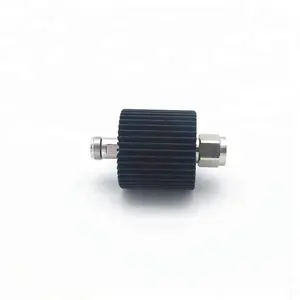
HTMICROWAVE Wide Band DC-4GHz 50 Ohm N Male To N Female 3/5/6/10/15/20/30dB 25W RF Coaxial Fixed Attenuator



















The C Band LNB for satellite antenna is a critical component in the realm of satellite broadcasting, enabling the reception of satellite television signals. This device, known as a low-noise block downconverter (LNB), is essential for capturing and converting satellite feed into a signal that can be processed by a satellite receiver. The C Band spectrum, typically ranging from 4 to 8 GHz, is a frequency range reserved for satellite communications, offering a balance between coverage and resistance to weather interference.
There are various types of LNBs tailored for different needs, including the C Band LNB for offset dish and the C Ku Band LNB offset dish. The former is designed specifically for offset dishes, which are a common type of satellite dish characterized by their off-center feedhorn. This design allows for better signal focus and reduced ground noise. The latter combines the functionality of both C and Ku bands, catering to users who require access to a broader range of frequencies.
The application of a C Band LNB for satellite antenna spans various sectors, from commercial broadcasting to private satellite reception. Users can expect features such as low noise figures, which is crucial for maintaining signal quality over long distances, and manual channel selection, allowing for precise adjustments to optimize reception. The LNBs come in different local oscillator frequencies, accommodating a range of satellite signals.
Constructed from durable materials, these LNBs are built to withstand the rigors of outdoor environments. The advantages of using a C Band LNB include its resilience to weather-related disruptions, such as rain fade, which can affect higher frequency bands more severely. Additionally, the C Band's wider beam width allows for reception with larger margin for error in dish alignment, making it a forgiving choice for various installation scenarios.
Selecting the right C Band LNB for satellite antenna involves considering factors such as the dish size, the desired channels, and the geographical location. While the choice of an LNB may not guarantee the reception of all satellite channels, it is a pivotal step in ensuring the best possible signal quality for the intended setup. It is important to assess the compatibility of the LNB with the existing equipment and the specific requirements of the satellite system.
Integrating a C Band LNB into a satellite system is a straightforward process for professionals familiar with satellite technology. The LNB is mounted on the satellite dish's arm and connected to the receiver. It is imperative to ensure proper alignment and secure connections to optimize the performance of the satellite system. While Alibaba.com facilitates the connection between suppliers and buyers of these LNBs, it is recommended to consult with a professional for installation and system configuration.